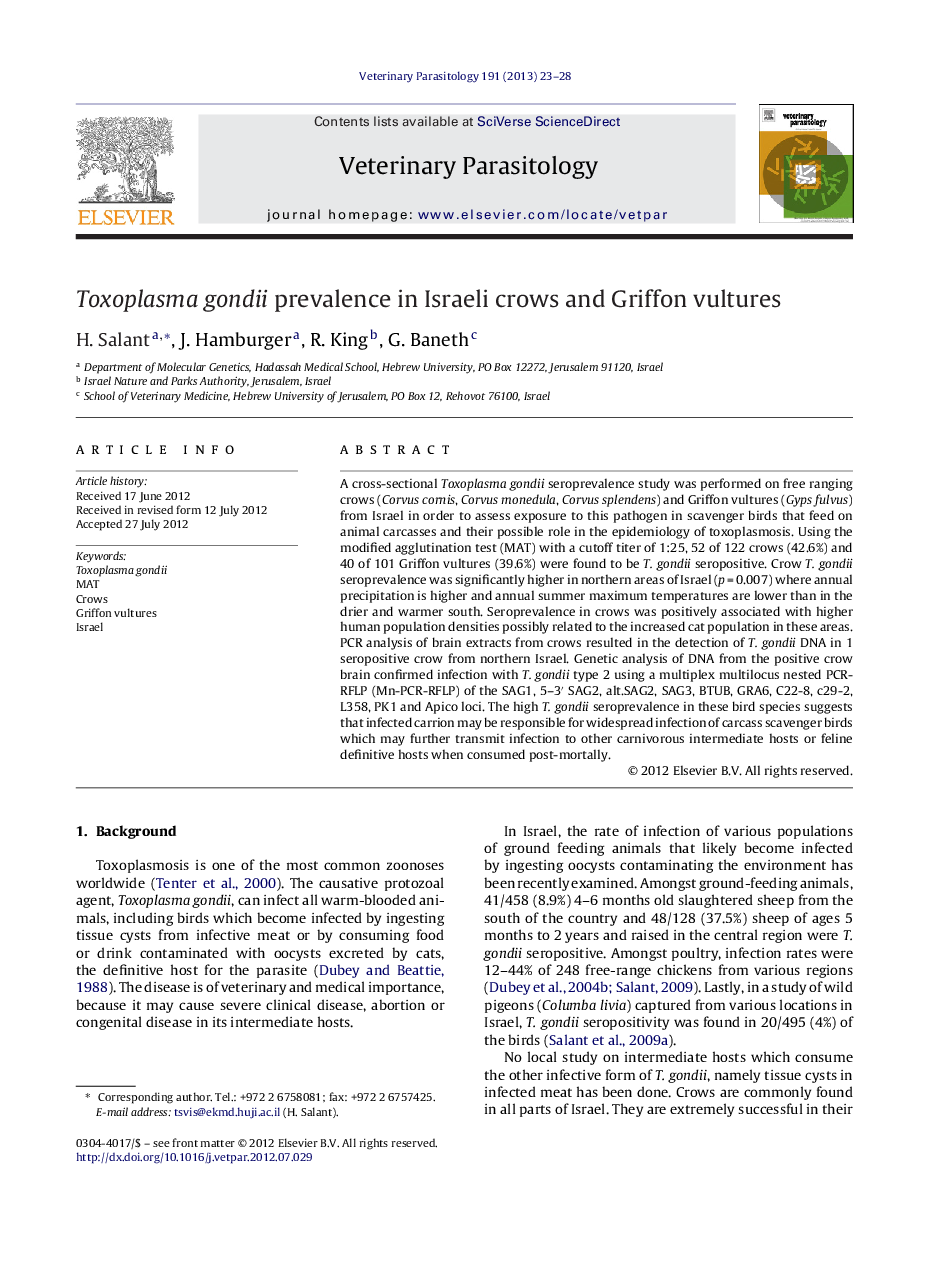| Article ID | Journal | Published Year | Pages | File Type |
|---|---|---|---|---|
| 5804371 | Veterinary Parasitology | 2013 | 6 Pages |
A cross-sectional Toxoplasma gondii seroprevalence study was performed on free ranging crows (Corvus cornis, Corvus monedula, Corvus splendens) and Griffon vultures (Gyps fulvus) from Israel in order to assess exposure to this pathogen in scavenger birds that feed on animal carcasses and their possible role in the epidemiology of toxoplasmosis. Using the modified agglutination test (MAT) with a cutoff titer of 1:25, 52 of 122 crows (42.6%) and 40 of 101 Griffon vultures (39.6%) were found to be T. gondii seropositive. Crow T. gondii seroprevalence was significantly higher in northern areas of Israel (p = 0.007) where annual precipitation is higher and annual summer maximum temperatures are lower than in the drier and warmer south. Seroprevalence in crows was positively associated with higher human population densities possibly related to the increased cat population in these areas. PCR analysis of brain extracts from crows resulted in the detection of T. gondii DNA in 1 seropositive crow from northern Israel. Genetic analysis of DNA from the positive crow brain confirmed infection with T. gondii type 2 using a multiplex multilocus nested PCR-RFLP (Mn-PCR-RFLP) of the SAG1, 5-3ⲠSAG2, alt.SAG2, SAG3, BTUB, GRA6, C22-8, c29-2, L358, PK1 and Apico loci. The high T. gondii seroprevalence in these bird species suggests that infected carrion may be responsible for widespread infection of carcass scavenger birds which may further transmit infection to other carnivorous intermediate hosts or feline definitive hosts when consumed post-mortally.
